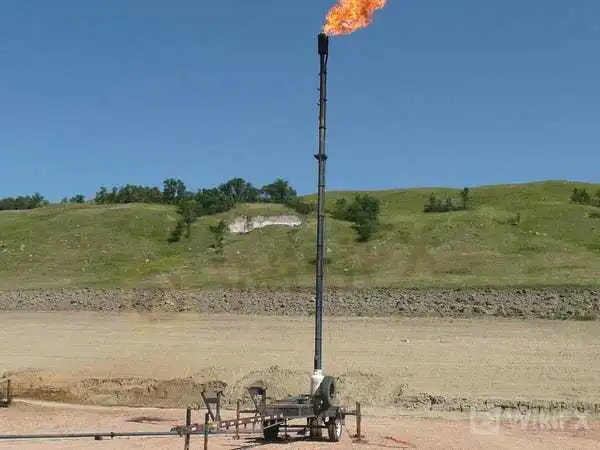简体中文
繁體中文
English
Pусский
日本語
ภาษาไทย
Tiếng Việt
Bahasa Indonesia
Español
हिन्दी
Filippiiniläinen
Français
Deutsch
Português
Türkçe
한국어
العربية
Fitch list of highest-risk energy bonds, risk of 'imminent default' - Business Insider
Abstract:Nearly half of Fitch's "top bonds of concern" are oil and gas companies, which have been hammered by the collapse in demand for crude oil.
The coronavirus pandemic has cratered demand for fuel and sent the price of oil tumbling, falling by as much as 65% in March, relative to the start of the year. US crude is trading under $22 a barrel, which is below what many oil companies need to turn a profit. That puts some firms at risk of defaulting. A new report by Fitch Ratings reveals that defaults by energy companies are expected to exceed $30 billion this year. Energy firms account for nearly half of Fitch's “top bonds of concern.” Here is a list of the 21 highest-risk energy bonds. Visit Business Insider's homepage for more stories.
There are all kinds of metrics you can use to measure the health of an industry, from stock prices to capital expenditure.Another one is debt, and that's what analysts at Fitch Ratings looked at in a report this week.They found that the default rate for high-yield bonds — those rated below investment grade — is set to rise above 4% in April, the highest level in more than three years. Energy defaults are expected to be even higher, thanks in part to a plunge in economic activity driven by the coronavirus. In the last 12 months, energy defaults reached nearly 10%, following the bankruptcy of the large oil and gas company Whiting Petroleum in March. Energy bonds were “especially impacted by the decline in crude oil prices as well as the material increase in supply,” Eric Rosenthal, senior director of leveraged finance at Fitch, said in a statement.
Click here to subscribe to Power Line, Business Insider's weekly energy newsletter.And it's only expected to get worse from here.The ratings firm projects the energy default rate to climb to 17% by the end of the year, “closing in on the record 19.7% mark set in January 2017.” “Timing will play a key role,” Rosenthal said in an email to Business Insider. It's possible that the “2020 rate could top the prior record depending on crude oil prices.” Another way of putting it: Energy defaults are expected to exceed $30 billion this year.
Read more: How 18 oil giants from Exxon to Halliburton are cutting staff and slashing spending in response to the historic oil price meltdown

Flaring at a Whiting Petroleum drill site in Stanley, North Dakota
Germain Moyon/AFP via Getty Images
The riskiest energy bondsIn the report, Fitch also included a list of its “top bonds of concern,” or those most at risk of default. It's based on things like ratings, market information, and input from the firm's analysts, Rosenthal said. High-yield bonds in the list, which includes 45 companies, amount to about $44 billion — up from about $36 billion last month. 21 of those companies are in the oil and gas industry, and they account for 60% of that bond volume. Some of the companies at risk of “imminent defaults” include California Resources and Denbury Resources, the analysts write. Last month, Denbury announced a handful of measures to preserve liquidity, such as slashing capital expenditure by more than 40%. California Resources has also announced plans to reduce capital investment.
So far, at least 17 companies in the oilfield service, oil patch, and midstream business have filed for bankruptcy this year, according to a report by the law firm Haynes and Boone.

A drilling rig on on a lease owned by the exploration and production company Oasis Petroleum
Nick Oxford/Reuters
'Top bonds of concern' in the energy industryHere are all 21 energy companies in Fitch's list of “top bonds of concern,” ranked from smallest to largest sums of outstanding high-yield bonds. Chaparral Energy Inc. — $300 millionNorthern Oil & Gas Inc. — $341 millionFTS International Inc. — $370 millionMartin Midstream Partners — $374 millionPride International Inc. — $535 millionCalfrac Holdings LP — $552 millionJonah Energy Inc. — $600 millionBruin E&P Partners LLC — $600 millionUnit Corp. — $650 millionVine Oil & Gas LP — $910 millionUltra Resources Inc. — $960 millionSummit Midstream Holdings — $1.1 billionSesi LLC — $1.3 billionOasis Petroleum Inc. — $1.7 billionFerrellgas Partners LP — $1.8 billionDenbury Resources Inc. — $1.8 billionGulfport Energy Corp. — $1.8 billionCallon Petroleum — $1.9 billionDiamond Offshore Drilling Inc. — $2 billionCalifornia Resources Corp. — $2.1 billionChesapeake Energy Corp. — $4.5 billionRead more:6 oil experts explain why OPEC's record-setting production cut will fail to stop prices from plummeting — and lay out what's ahead for the struggling industryHow 18 oil giants from Exxon to Halliburton are cutting staff and slashing spending in response to the historic oil price meltdownDividends of 7 top oil majors face a mounting risk of being cut, a top analyst warnsA startup backed by Goldman Sachs is measuring shadows from space to track the world's oil supply — and it's yielding shocking numbers that no one else has
Disclaimer:
The views in this article only represent the author's personal views, and do not constitute investment advice on this platform. This platform does not guarantee the accuracy, completeness and timeliness of the information in the article, and will not be liable for any loss caused by the use of or reliance on the information in the article.
Read more

GemForex | Crude Oil (WTI)
Crude Oil (WTI) - Rebound in the offing?

Oil inches higher as OPEC meetings continue
A stronger than expected payroll report last Friday pushed equity markets to another all-time high. The U.S. economy added 850,000 new jobs during June when the consensus expected 700,000. Whilst the headline number looks good, there’s plenty to be worried about under the hood, as the new jobs are mostly in those sectors of the economy that have reopened. For instance, the leisure and hospitality sectors added 343,000 new jobs, education around 269,000, and the retail sector 67,000. These add up to around 80% of the total; this is great at first glance but not in the long run since these sectors do not drive the productivity or wage growth required for sustainable expansion. In particular, the U.S. economy is 70% consumer driven, which emphasizes the importance of a healthy and wealthy labor market. With the country still 7 million jobs short of pre-pandemic levels and most of the recovery happening in low-paying and low-productivity sectors, there is still a long way to go before the

Oil Countdown: With 48 Hours To OPEC Meeting, Where Are Prices Headed?
It’s the answer every oil trader is seeking, yet will likely get with only a certain degree of accuracy. With about two days left until the all-important ministerial meeting of OPEC+, few things are more crucial than figuring out where oil will be trading before the world alliance of oil producers lays down its policy decisions for December. Dozens of ideas abound on crude prices over the next 48 hours, with as many theories on why they should be so

Oil and euro slip, markets on edge over COVID-19 curbs in Europe
Asian stocks made a soft start to the week on Monday while oil and the euro were under pressure, as the return of COVID-19 restrictions in Europe and talk about hastened tapering from the U.S. Federal Reserve put investors on guard.
WikiFX Broker
Latest News
AIMS Broker Review
The Hidden Checklist: Five Unconventional Steps to Vet Your Broker
Russia to Fully Ban Crypto Mining in 10 Regions Starting January 1, 2025
YAMARKETS' Jingle Bells Christmas Offer!
Why is there so much exposure against PrimeX Capital?
MTrading’s 2025 "Welcome Bonus" is Here
Doo Financial Obtains Licenses in BVI and Cayman Islands
CFI’s New Initiative Aims to Promote Transparency in Trading
Currency Calculator


